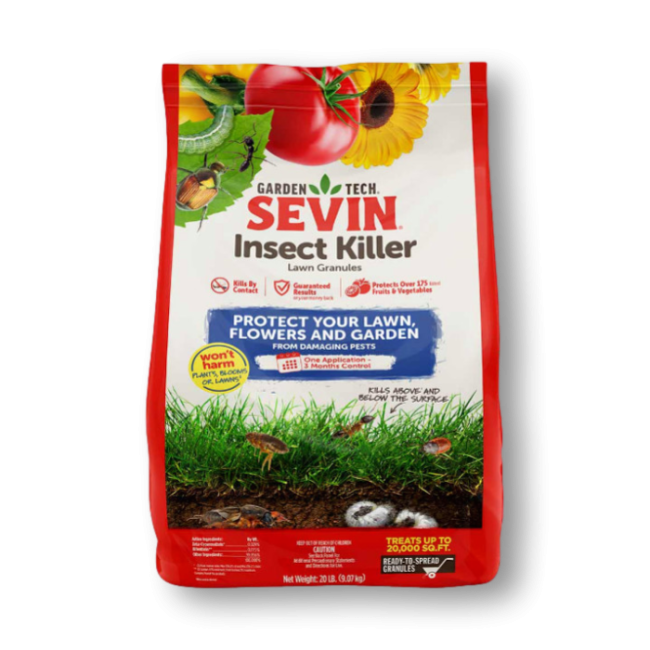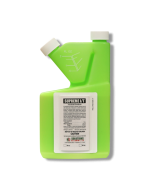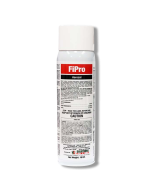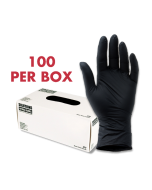Gain access to personalized product screening, the best pricing, rewards, and more!
Sevin Insect Killer Lawn Granules
Sevin Insect Killer Lawn Granules is an easy-to-use granular insecticide that kills over 100 pests on fruit and vegetable gardens, ornamentals, and lawns by contact and protects for up to 3 months.
10/03/25
Sevin Insect Killer Lawn Granules, manufactured by GardenTech, is a fast-acting, granular insecticide that provides powerful protection againt various above and below-ground pests and defends residential lawns, gardens, fruits, and vegetables for up to 3 months.
Powered by the active ingredient Zeta-Cypermethrin, a synthetic pyrethroid, this product works by targeting the nervous system of insects paralyzing and killing them quickly upon contact. Its fast-acting formula delivers contact kill results on pests such as ants, fleas, ticks, grubs, chinch bugs, and more. Whether insects are crawling on the surface or hiding beneath the soil, Sevin Insect Killer Lawn Granules granular formulation penetrates both layers to ensure complete pest control.
Sevin Insect Killer Lawn Granules delivers fast, powerful protection against over 100 listed insects with above- and below-surface action, killing on contact and defending 175 types of residential crops, ornamentals, exterior of homes and more for up to 3 months just spread and let the magic happen.
Tools Needed
A handheld spreader, push spreader, broadcast spreader, or rotary spreader will be needed.
How to Use
- Step 1: Determine how much Sevin Insect Killer Lawn Granules to use by measuring the square footage of the treatment area. Find the square footage by measuring the treatment area's length and width in feet, then multiplying them together (length X width = square footage). For general applications, use 1 to 4 pounds of Sevin Insect Killer Lawn Granules per 1,000 sq. ft. Do not exceed more than 4 pounds of product per 1,000 sq. ft. per application. Refer to the product label for specific application rates and restrictions.
- Step 2: Adjust the calibration then load the proper amount of granules.
- Step 3: Spread the granules evenly across the treatment area. After spreading, lightly water the area to help activate the insecticide and carry it down into the soil where below-surface pests live.
Where to Use
Sevin Insect Killer Lawn Granules can be used on listed fruit and vegetable gardens, ornamental plants and shrubs, flowers and ground covers, around structures, and lawns.
When to Use
Apply before or during pest infestations on days when rainfall is not expected for the next 24 hours after application.
Safety Information
Sevin Insect Killer Lawn Granules are safe for people and pets when applied according to the product label instructions. Always wear the proper personal protective equipment (PPE) when handling and applying this product.
Do not allow people or pets to enter the treated area until all dusts have settled, watering-in is complete, and the treatment area has dried.
Pre-harvest intervals must be followed, so it's best to refer to the label as each crop type will vary.
Special Considerations
Certain plants such as annuals may be sensitive to the watered-in granules.
| Availability | Online |
| Restricted Use | No |
| Shipping Restrictions | 20 Pound: NY 10 Pound: NY |
| Brand | GARDENTECH |
| Keith's Pro Tips | "Keep plants well-watered, properly fertilized, and pruned. Healthy ornamentals are naturally more resistant to pests and less likely to suffer major damage." |
| Product Drawbacks | This pesticide is extremely toxic to fish, aquatic invertrebates, oysters, and shrimps. |
| Target Pests | American Dog Ticks, Ants, Aphids, Armyworms (including Lawn Armyworm, Fall Armyworm), Asian Ladybeetle, Annual Bluegrass Weevils, Apache Pseudoscorpion, Beaded Pseudoscorpion, Bermudagrass Mites, Billbugs (including Bluegrass Billbug, Hunting Billbug), Black Turfgrass Ataenius (adults), Black Cutworm, Bristletail, Bronzed Cutworm, Brown Dog Tick, Brown Recluse Spider, Burrowing Wolf Spider, California Common Scorpion, Centipedes, Chiggers, Chinch Bugs, Clover Mites, Common Short-tailed Cricket, Convergent Ladybeetle, Crickets (including House Cricket, Texas Field Cricket, Spring Field Cricket, Northern Wood Cricket, Western Striped Cricket, Eastern Striped Cricket, Sand Field Cricket, Vocal Field Cricket, Southern Wood Cricket), Cutworms (including Granulate Cutworm, Variegated Cutworm), Diabrotica Flea Beetle, Earwigs, Eastern Sand Scorpion, Essex Skipper, European Chafer, European Crane Fly Larvae, Fiery Skipper, Fire Ants, Firebrats, Flea Larvae, Fleas (larvae and adult), Frit Fly, Grass Webworm, Grasshoppers, Greenbug, Grubs, Ground Beetle, Ground Pearl, Hunting Billbug, Ladybeetles (including Convergent, Seven-spotted, Two-spotted, Thirteen-spotted, Twice-stabbed, Asian, Mealybug Ladybeetle), Leafhoppers (including Potato Leafhopper), Leafrollers, Longbodied Cellar Spider, Mealybugs, Mealybug Ladybeetle, Millipedes, Mole Crickets (including Tawny Mole Cricket, Southern Mole Cricket, Short-winged Mole Cricket), Northern Scorpion, Pillbugs, Pirate Wolf Spider, Plant Bugs, Pseudoscorpions, Seed Maggots, Scorpions (including Yellow Ground Scorpion), Seven-spotted Ladybeetle, Short-winged Mole Cricket, Sod Webworms, Southern Mole Cricket, Southern Wood Cricket, Sowbugs, Spider Mites, Spiders (including American House Spider, Brown Recluse Spider, Longbodied Cellar Spider, Striped Lynx Spider, Tropical Cellar Spider, Wolf Spider, Burrowing Wolf Spider, Pirate Wolf Spider), Springtails, Striped Grassworm, Ticks (including Brown Dog Tick and ticks that may transmit Lyme Disease), Thirteen-spotted Ladybeetle, Tropical Cellar Spider, Tropical Sod Webworm, Two-lined Spittle Bugs, Two-spotted Ladybeetle, Twice-stabbed Ladybeetle, Variegated Cutworm, Vocal Field Cricket, Webworms, Weevils (including Hyperodes and Bluegrass), Western Striped Cricket, Wireworms, Wolf Spider, and Yellow Ground Scorpion. |
| Application Equipment | Hand Spreader, Push Spreader, Rotary Spreader |
| Application Methods | Granular Spreading |
| Active Ingredient | Zeta-Cypermethrin 0.029% |
| Product Type | Insecticide |
| Formulation | Granular |
| Application Rate | For general applications, use 1 to 4 pounds of Sevin Insect Killer Lawn Granules per 1,000 sq. ft. |
| Shelf Life | Sevin Insect Killer Lawn Granules will last for 3 years when stored in a dry, clean area. |
| Yield | 10 lbs. of Sevin Insect Killer Lawn Granules will cover 10,000 sq. ft. |
| Use Sites | Outdoors |
| Time to Kill | Sevin Insect Killer Lawn Granules will last for 3 months. |
| Comparable Products | Sevin Insect Killer Concentrate |
| EPA Registration # | 279-3346-71004 |
| Restricted Use | No |
|---|---|
| Availability | Online |
| Signal Word | CAUTION |
| Keith's Pro Tip | "Keep plants well-watered, properly fertilized, and pruned. Healthy ornamentals are naturally more resistant to pests and less likely to suffer major damage." |
| Time to Kill | Sevin Insect Killer Lawn Granules will last for 3 months. |
| Chemical Type | Insecticide |
| Formulation | Granular |
| Application Methods | Granular Spreading |
| Product Drawbacks | This pesticide is extremely toxic to fish, aquatic invertrebates, oysters, and shrimps. |
| Active Ingredient | Zeta-Cypermethrin 0.029% |
| Application Equipment | Hand Spreader, Push Spreader, Rotary Spreader |
| Mix Rate | For general applications, use 1 to 4 pounds of Sevin Insect Killer Lawn Granules per 1,000 sq. ft. |
| Use Sites | Outdoors |
| Yield | 10 lbs. of Sevin Insect Killer Lawn Granules will cover 10,000 sq. ft. |
| EPA Registration No. | 279-3346-71004 |
| Shelf Life | Sevin Insect Killer Lawn Granules will last for 3 years when stored in a dry, clean area. |
| Comparable Products | Sevin Insect Killer Concentrate |
| Children or pets? | No |
| Property Characteristics | Food-Bearing Plants |
*Price does not include freight. We guarantee our rate plus shipping will be less than anyone else's price.














